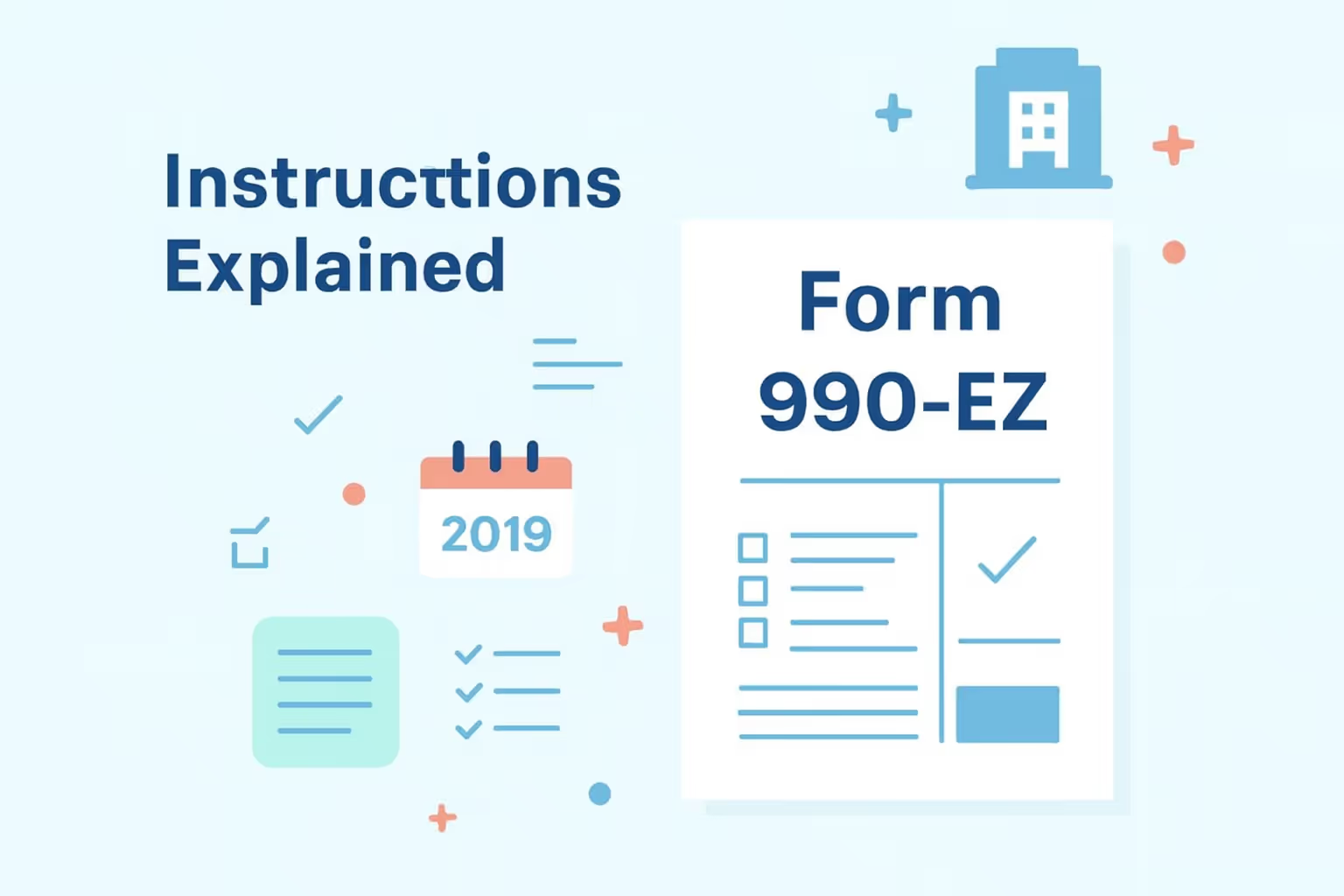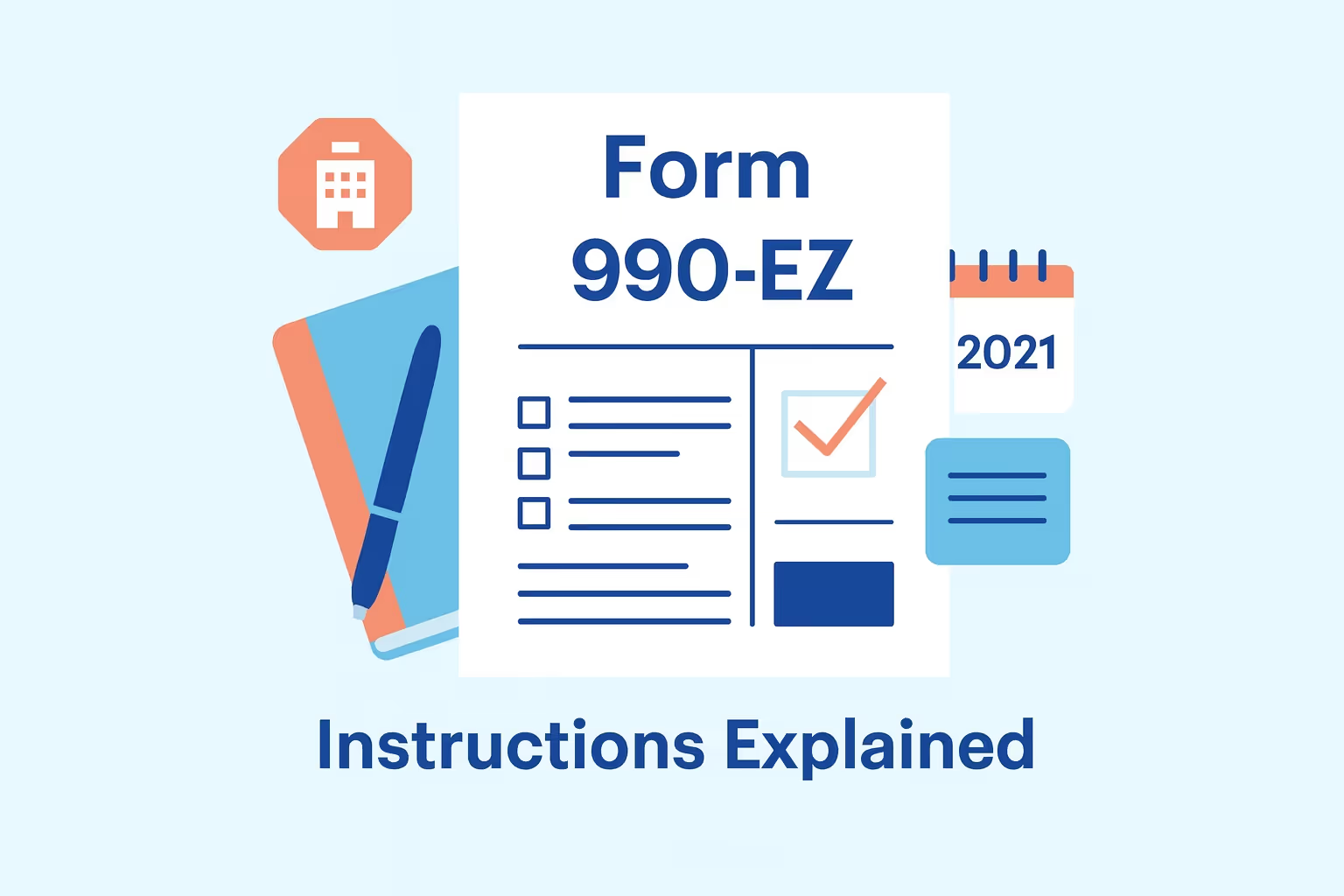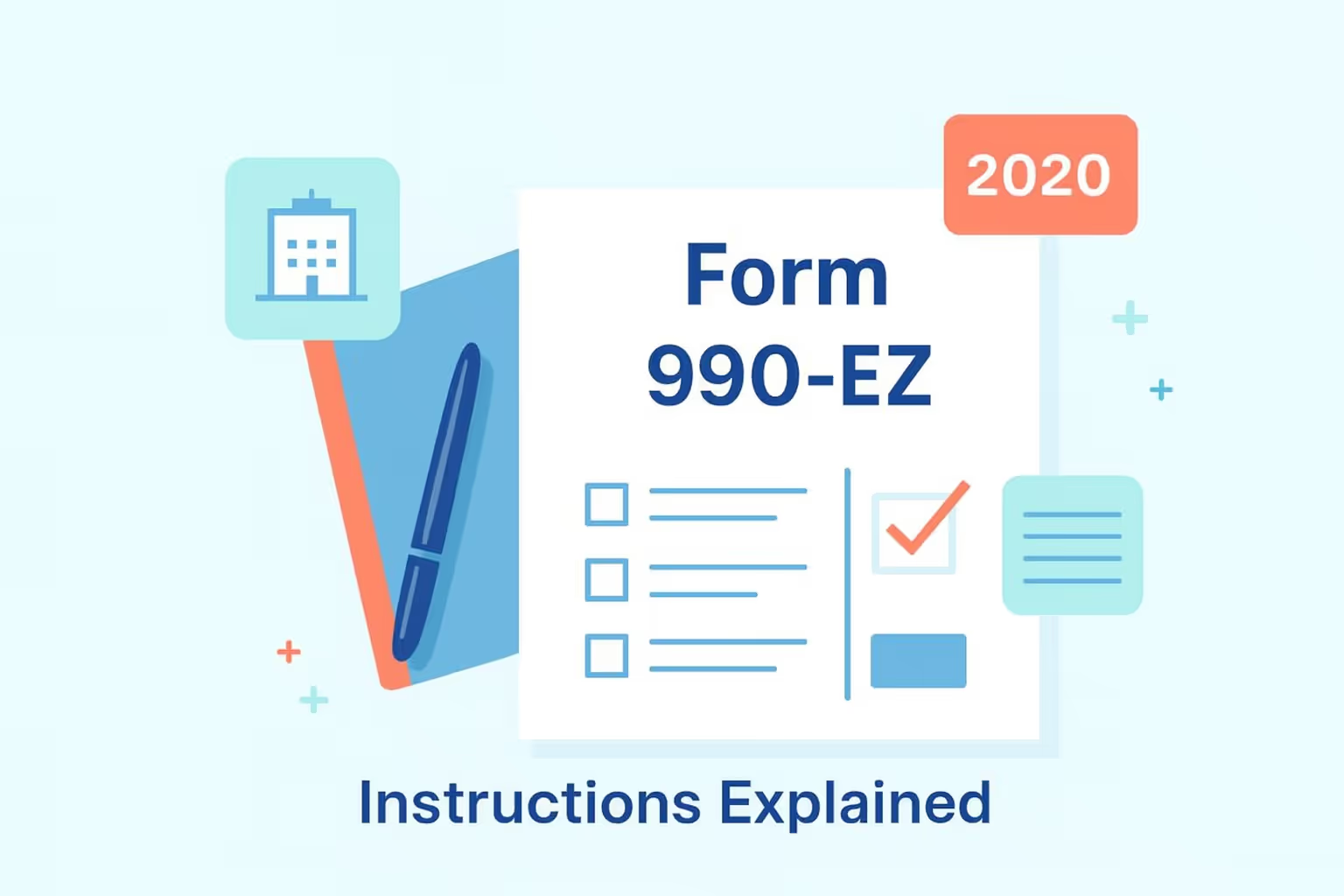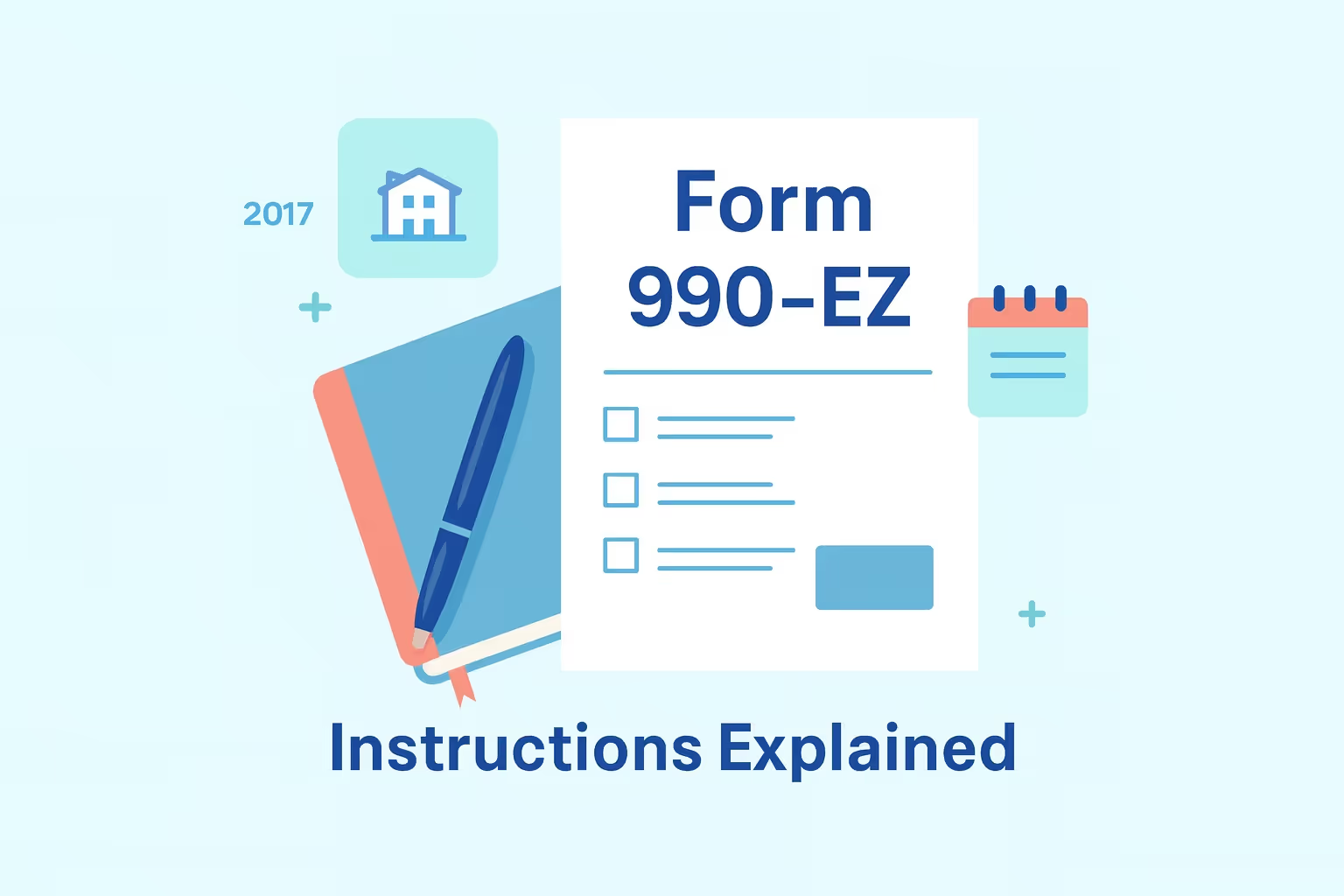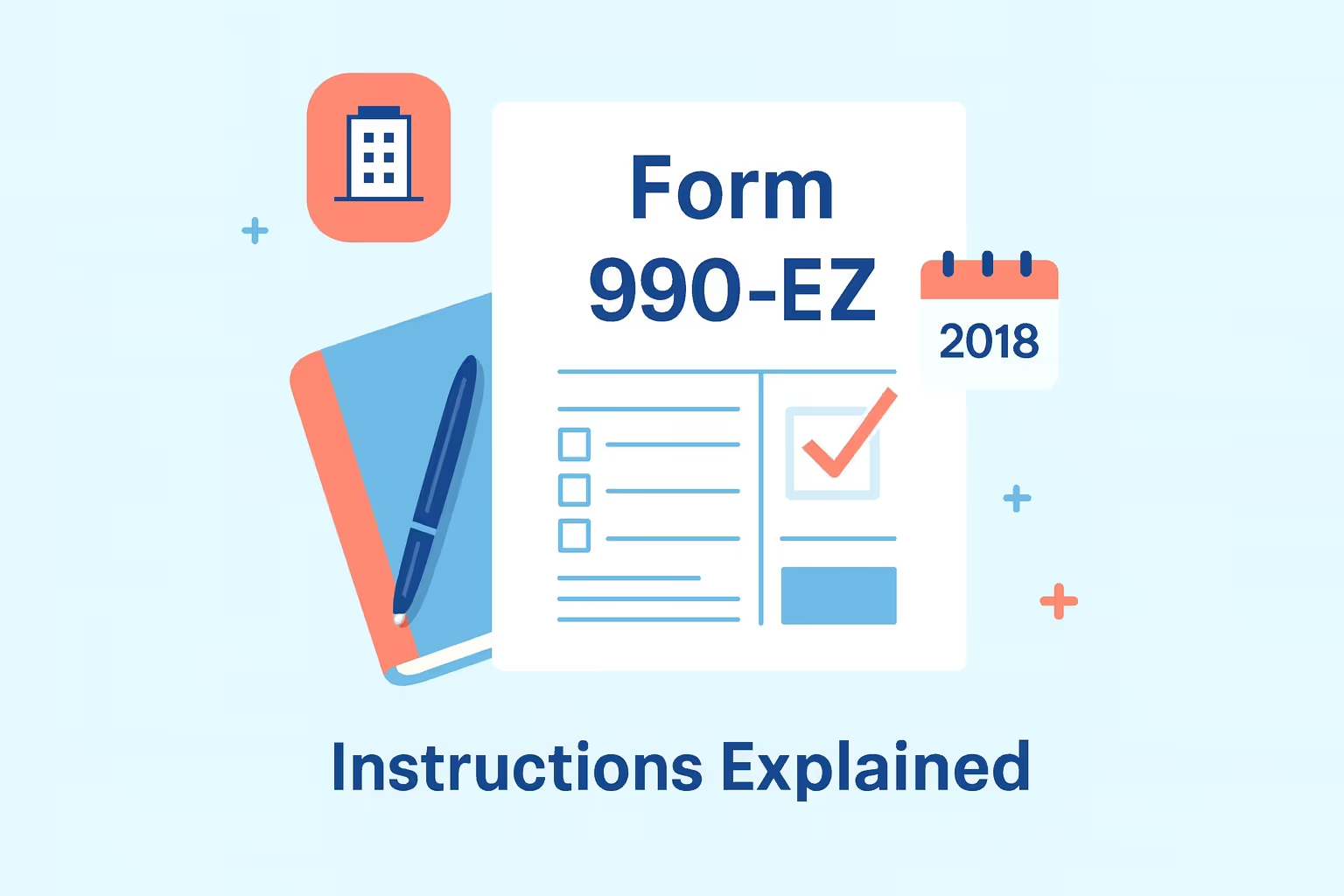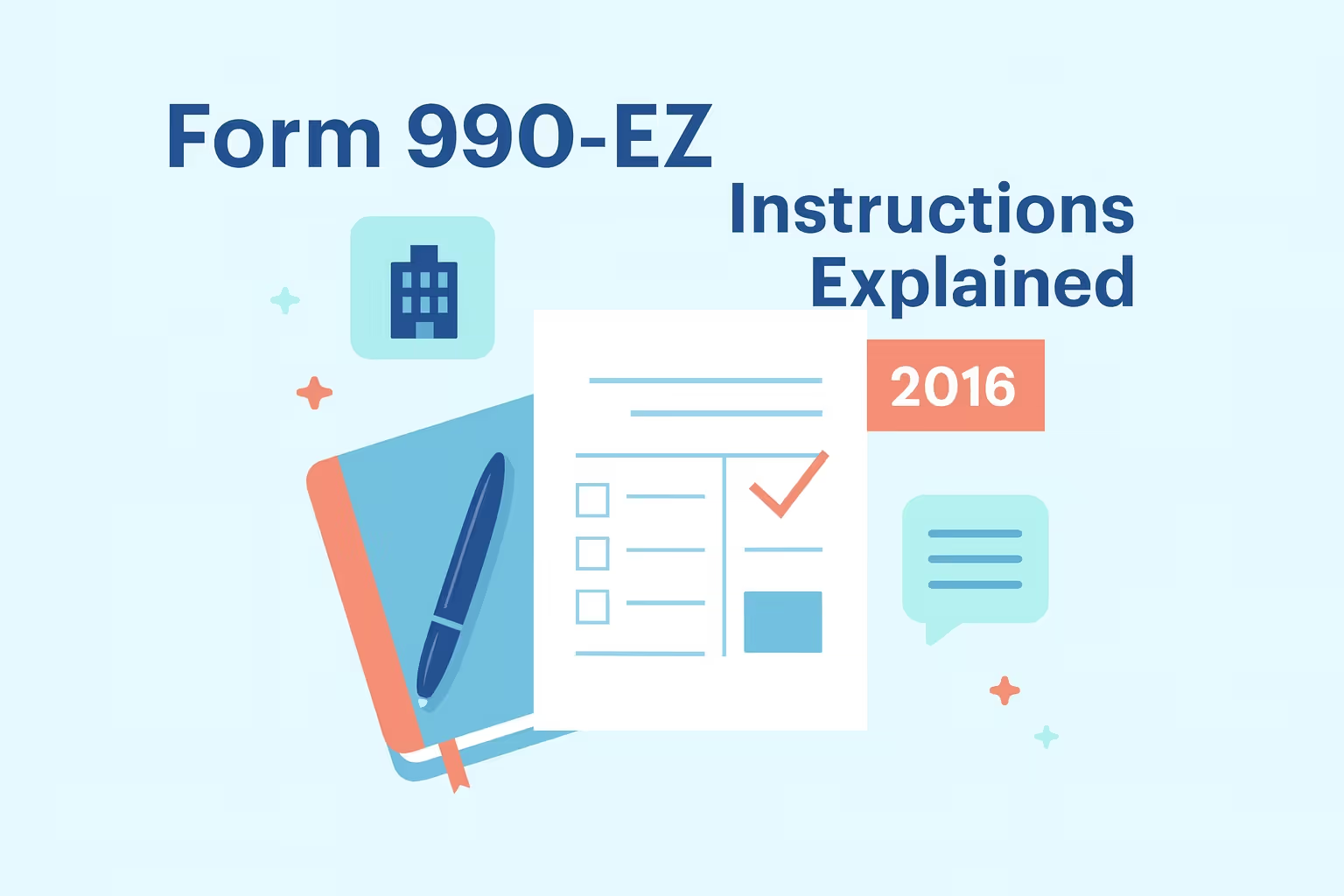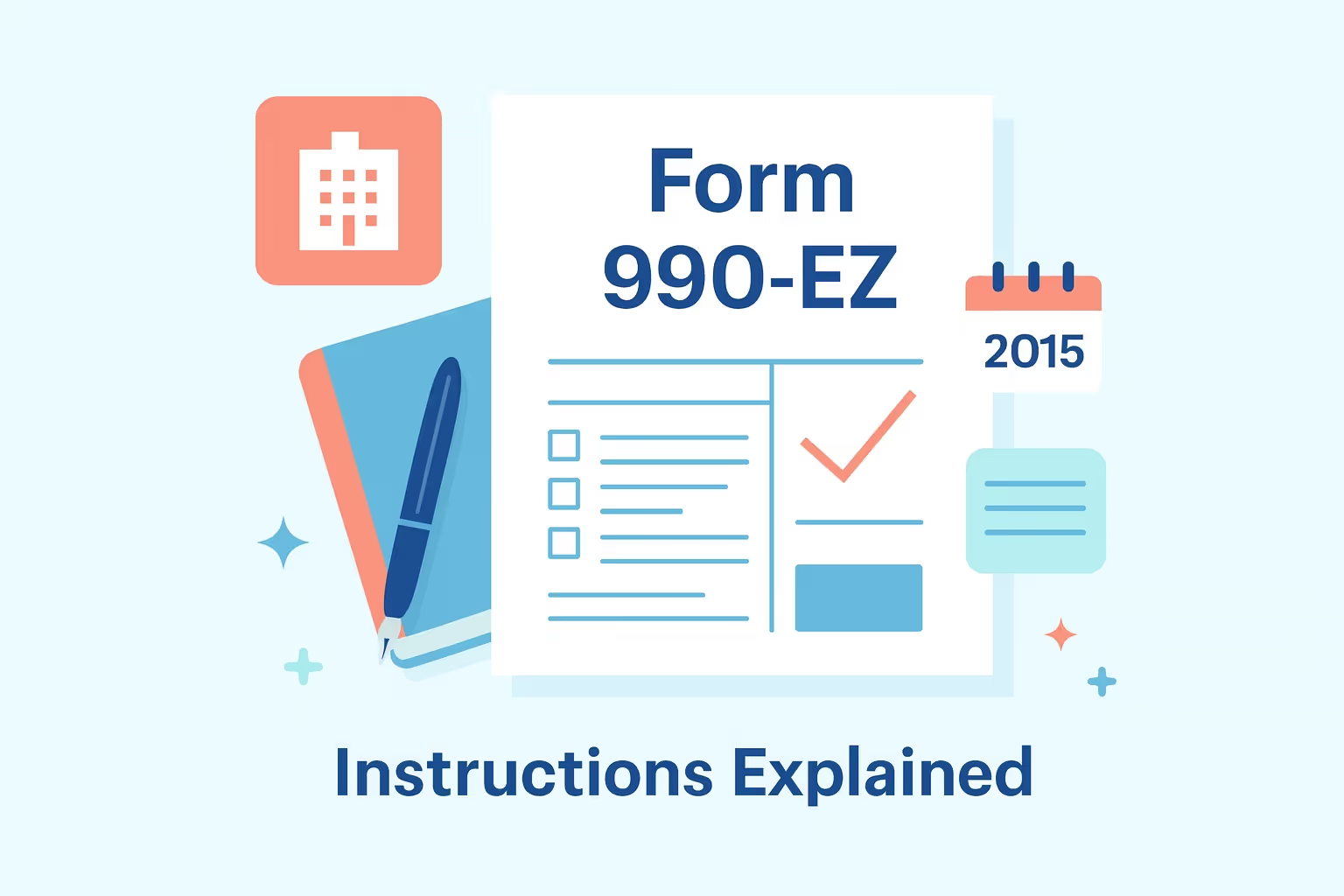
What IRS Form 990-EZ (2015) Is For
IRS Form 990-EZ (2015) serves as the simplified return for organizations exempt from income tax under the Internal Revenue Code. It allows smaller tax-exempt entities, including nonprofit corporations, charitable trusts, and associations, to report annual gross receipts, total assets, and program service revenue. The filing organization must enter accurate organization details, such as its employer identification number, accounting method, and tax year, to maintain a valid tax-exempt status.
The form provides a summary of the organization’s primary exempt purpose, program service accomplishments, and financial accountability. Reporting net assets, fund balances, and all the expenses ensures compliance with federal tax requirements. Completing the correct form for the proper tax period reinforces transparency and protects the organization’s standing with the Internal Revenue Service.
Readers who need a concise explanation of reporting requirements may refer to the Form 990-EZ – Return of Organization Exempt from Income Tax for added context.
When You’d Use IRS Form 990-EZ (2015)
Nonprofit organizations file IRS Form 990-EZ (2015) when they need to report late, corrected, or amended information for a previous tax year. Organizations file this form if they missed the original due date, received penalty notices, or need to update financial details. Completing the form accurately ensures that the organization maintains its valid tax-exempt status and demonstrates compliance with Internal Revenue Service requirements.
Late or amended filing may also apply when the organization updates its annual gross receipts, net assets, or program service revenue. Organizations must provide their employer identification number, accounting method, and all relevant organization details for accurate review. Filing helps prevent penalties and ensures organizational transparency.
Timely action allows nonprofits to stay compliant and maintain eligibility for future tax years. Proper documentation supports accountability and reinforces the organization’s commitment to lawful reporting.
Key Rules or Details for 2015
IRS Form 990-EZ (2015) follows specific eligibility and filing standards established by the Internal Revenue Service. These rules ensure accurate reporting of the organization’s activities, tax-exempt purpose, and accounting practices. Each organization must use the correct version for the applicable tax year to prevent errors and ensure consistent recordkeeping.
- Organizations must have annual gross receipts under $200,000 and total assets below $500,000.
- Organizations with 250 or more returns, or total assets exceeding $10 million, must e-file their returns to comply with IRS e-filing requirements.
- Hospitals, private foundations, and nonexempt charitable trusts are not eligible to file IRS Form 990-EZ.
- Each filing must disclose the organization’s accounting method, its employer identification number, and any excise taxes owed to ensure complete compliance.
Adhering to these requirements ensures compliance and financial accuracy while preserving the organization’s exempt status and building public confidence.
Step-by-Step (High Level)
Filing IRS Form 990-EZ (2015) requires accuracy, proper supporting documentation, and consistency in all reported figures. Each organization must prepare its records, verify its accounting method, and ensure that all financial information aligns with the correct tax year. Following these steps helps prevent common filing mistakes and delays in IRS processing.
- Gather Records: Collect financial statements, receipts, and documents for annual gross receipts and total assets.
- Add Organization Details: Include the employer identification number, accounting method, and fiscal tax year information.
- Calculate Revenue: Separate program service revenue, investment income, and other income sources.
- Attach Schedules: Provide Schedule A for public charity status and Schedule B for contributors.
- Submit Filing: Mail the completed form or e-file through an authorized IRS system.
Accurate submissions reinforce transparency and uphold the organization’s compliance with federal reporting rules.
Common Mistakes and How to Avoid Them
Filing IRS Form 990-EZ (2015) requires thorough preparation to avoid errors that could delay processing or result in penalties. Every filing organization must verify its financial data, confirm the correct form year, and ensure that all schedules are complete. Reviewing each detail before submission helps maintain compliance and supports the organization’s tax-exempt status.
- Using the Wrong Form Year: The organization must use the 2015 version to match the proper tax year. Using a form from a different year can result in rejection.
- Omitting Required Schedules: Each submission must include all required schedules, including Schedule A for public charity status and Schedule B for contributors. Missing attachments make the return incomplete.
- Reporting Incorrect Totals: Errors in gross receipts, total assets, or net assets affect financial accuracy.
- Providing Vague Explanations: Each correction or amendment must include a detailed written explanation for transparency.
A thorough review of the submission ensures the accuracy of the data and compliance with IRS requirements while building confidence in the submitted report.
What Happens After You File
After submitting IRS Form 990-EZ (2015), the Internal Revenue Service reviews the form to confirm the accuracy of all reported information. The organization’s compliance depends on how well its filing aligns with financial records and stated program activities. Understanding the review process helps the organization prepare for potential correspondence or adjustments.
IRS Review and Processing
The IRS reviews each section to verify gross receipts, total assets, and net assets for accuracy. Any inconsistencies may delay processing, especially for filings covering a previous tax year. In general, electronic submissions are processed faster than paper filings. This streamlines the review process.
Penalties and Relief Options
The IRS may assess daily penalties of $20 for late submissions, up to $10,000 or 5 percent of annual gross receipts. The organization may request penalty relief through a written reasonable-cause statement. Providing supporting documentation improves the likelihood of approval.
For a detailed explanation of overdue filings and related compliance steps, visit our Unfiled Tax Returns: How to File and Avoid Penalties Complete Guide to Filing.
FAQs
Can tax-exempt organizations still file Form 990-EZ for 2015?
Yes, tax-exempt organizations may still file Form 990-EZ for a previous calendar tax year or fiscal tax year. Filing ensures accurate reporting of the organization’s gross receipts, total assets, and net income to preserve its exempt status.
How is the group exemption number used?
The group exemption number identifies related entities operating under a common parent organization. Including this number confirms the filing organization’s inclusion in an approved group exemption letter issued by the Internal Revenue Service.
Do organizations need to report foreign financial accounts or capital contributions?
Yes, exempt organizations that maintain foreign financial accounts or receive significant capital contributions must disclose those transactions. Reporting helps ensure transparency and compliance with IRS disclosure rules.
What information must be included for net assets and the accounting method?
Organizations must report beginning and ending balances for net assets and specify the accounting method used during the organization’s tax period. Consistency in financial reporting allows the IRS to compare results with previously reported data.
Who qualifies as key employees or the highest compensated employees?
Key employees and the highest compensated employees include individuals who manage operations or oversee major financial activities. Organizations must list names, compensation, and responsibilities to demonstrate compliance with disclosure requirements.
Organizations that need access to related federal schedules, instructions, and prior-year versions may consult the Federal Tax Forms Library for a comprehensive set of supporting materials that apply to this filing category.
















